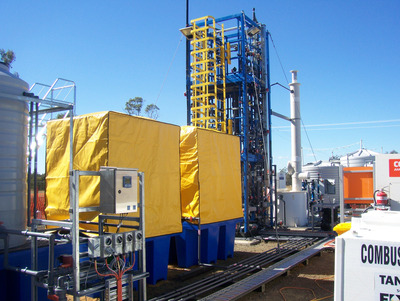Integrating modern technologies in water treatment process control
Wednesday, 26 March, 2014
Process control is vital to ensuring the integrity of the water supply chain in civil and industrial applications. Technological innovation relating to the design, installation and operation of process control equipment has consistently delivered improvements - but remaining viable in this industry requires staying abreast of the latest industry trends to ensure an efficient and effective system.
Water is a finite resource, so the efficient management of this resource is a key driving factor behind industry investment. Much of the water that we use every day is actually on a continuous loop, constantly being processed after use so it can be returned to the environment before it is extracted again, treated and re-used. This process is dependent upon precise process control, monitoring and data recording to ensure that all the regulatory standards are maintained and that the environment and general population are protected.
Sewage treatment consists of four main processes: screening, primary filtration, secondary filtration and tertiary treatment. On entering a sewage treatment works, dirty water passes through screens to remove paper, wood and other articles that could damage machinery or block pipe systems. Before the wastewater progresses to the next stage, iron or aluminium salts are added to assist in the removal of phosphorus, while biological processes will remove nitrogen. The process of chemical dosing has to be controlled and monitored to ensure compliance with local water-quality standards.
The remaining processes involve further settlement and filtration before the water can be returned to the local water course, from where it may be extracted to undergo further purification. The water is dosed with aluminium sulfate, which helps to bind the impurities together to form particles. This process requires monitoring of pH levels as well as effective mixing in order to be efficient. Removing taste and odour, as well as disinfection, are carried out to ensure that the final product is potable and meets the necessary regulations.
The water treatment industry prefers to operate a centralised control system for each site, making it quicker and easier for operators to assess the equipment and processes on the site. With such a wide array of sensors, valves and pumps installed around the site, the most efficient controller will be one that is capable of multiple tasks while still being simple to operate.
One example would be Bürkert’s type 8619 MultiCELL transmitter/controller, which utilises pH, conductivity and flow sensors, ORP and temperature measurements. The product is suitable for a wide range of applications in water treatment. It is compatible with most common sensors and has a modular design which allows additional hardware and software to be added easily.

Each controller can be configured for a range of sensors and has up to six pre-configured I/O boards to accommodate any signal requirements. In addition, the product can be configured as a data logger, using the built-in SD card slot for data storage. The slot can also be used to save sensor parameters and control application settings to allow the same settings to be replicated in other MultiCELL controllers, ensuring the accurate transfer of control parameters between sites.
The controller has been designed with both the installer and the operator in mind. The system can be customised to clients’ requirements, while the intuitive user interface can be configured in four different views to display the most relevant information. A systems engineer can, in many instances, replace an entire control cabinet with one controller that utilises a built-in display. Users only pay for the features that they require and, since the product provides a single controller/transmitter across a range of applications, inventory and training costs are minimised.
Similar principles have been used in the design of the mxCONTROL multifunction controller, type 8620, which has ethernet or modem communication as well as the ability to control digital dosing pumps. The flexible programming capabilities enable integrators and end users to make fast program modifications during commissioning and maintenance. There is an SD card slot for data logging and saving parameter settings to save time when installing many units across different sites. By using a simple user interface, easily configured control programs and common sensors, the whole process from design to implementation is streamlined for efficiency.
Both solutions allow direct connection to existing SCADA systems and other methods of site-wide monitoring and supervisory control. Adding connectivity to pH sensors and flow meters, for example, can add to the automation efficiency of a plant. Cloud-based monitoring solutions, such as Bürkert’s mySITE remote monitoring solution, can be added to any multichannel system to monitor sensor outputs. This supports email and text alarming, plus historical trending for process and maintenance optimisation.
The continual development of the area of process control highlights the need to understand changing trends and adapt systems to remain efficient. By using in-depth knowledge of process control and working with the end user, the panel builder and the installer, it is possible to create a package that works for all concerned and delivers a simple-to-use, efficient and cost-effective solution.
Data centres working to use water responsibly
Decisions that go into designing a new data centre will stay in place for many years to come, so...
Acoustic analysis helps protect a high-risk asset
A collaboration between Scottish Water and water solutions provider Xylem has netted a...
Future Made in Australia needs water to make it happen
Boosting technologies and manufacturing for a Future Made in Australia could get off to a healthy...









